- Home
- Neal Stephenson
Some Remarks: Essays and Other Writing Page 12
Some Remarks: Essays and Other Writing Read online
Page 12
It often seems that, from the point of view of many entrepreneurial souls in East Asia, the West’s tight-assed legal system and penchant for ethical dithering have left many inviting niches to fill. Perhaps this explains their compulsion to enter such perfectly sensible fields as driftnet fishing, making medicines from body parts of nearly extinct species, creative toxic waste disposal, and, above all, the wholesale, organized theft of intellectual property. It’s not just software, either—Indonesia has bootleg publishers who crank out counterfeit bestsellers, and even Hong Kong’s Saturday morning TV clown wears a purloined Ronald McDonald outfit.
This has a lot to do with the collective Chinese approach to technology. The Chinese were born to hack. A billion of them jammed together have created the world’s most efficient system for honing and assimilating new tech (they actually view Americans as being somewhat backward and slow to accept new ideas—the Chinese are considered, as Bill Newton put it, “not so much early adopters as rapid adopters”). As soon as someone comes up with a new idea, all the neighbors know about it, and through an exponential process that you don’t have to be a math major to understand, a billion people know about it a week later. They start tinkering with it, applying it to slightly different problems, trying to eke out hair-thin improvements, and the improvements propagate across the country until everyone’s doing things the same way—which also happens to be the simplest and most efficient way. The infrastructure of day-to-day life in China consists of a few simple, cheap, robust technologies that don’t belong to anyone: the wok, the bicycle, various structures made from bamboo and lashed together with strips of rattan, and now the 286 box. A piece of Chinese technology, whether it’s a cooking knife or a roofing tile, has the awesomely simple functionality of a piece of hand-coded machine language.
Introducing non-copy-protected software into this kind of an environment may be the single most boneheaded thing that American business has ever done in its long history of stepping on rakes in Asia. The Chinese don’t draw any mystical distinctions between analog and digital tech; whatever works, works, and so they’re happy to absorb things like pagers, cellphones, and computers if they find that such things are useful. I don’t think you find a lot of Chinese expressing hostility toward computers or cellphones in the same way that technophobic Americans do. So they have not hesitated to enshrine the pager, the cellphone, and the 286 box in their pantheon of simple, ubiquitous technology, along with the wok, the bicycle, and the Kalashnikov assault rifle.
While avoiding technophobia, they’ve also avoided techno-fetishism for the most part. They don’t name their computers “Frodo,” and they generally don’t use them to play games, or for anything more than keeping the accounts, running payroll, and processing a bit of text. In China, they treat computers like they treat dogs: handy for a few things, worth having around, but not worth getting overly attached to.
Shanghai’s computer stores were all completely different. One place had a pathetic assortment of yellowed stuff from the Apple II Dynasty. Another specialized in circuit boards, catering to do-it-yourselfers. There were several of what we’d call box movers: stores crowded with stacks of brand-new 486 boxes and monitors. And I found one place hidden way off the street in a giant old Western-style house, which I thought was closed at first because all the lights were off and no one seemed to be there. But then people began to emerge from the shadows one by one and turn on lights, one fixture at a time, slowly powering up the building, shedding light on an amazing panoply of used computers and peripherals spanning the entire history of the industry. In more ways than one, the place was like a museum.
I GOT AROUND SHANGHAI IN A NONDESCRIPT WHITE FORD. BECAUSE OF ITS high fuel consumption, the driver called it the “Oil Tiger.” Whenever it ran low, he was compelled by certain murkily described safety regulations to leave me a block away from the fuel pumps while he filled it up, which imparted an air of drama to the procedure.
One day, on the outskirts of Shanghai, I stumbled across a brand-new computer store with several large floral arrangements set up in front. A brass plaque identified it, imposingly enough, as the Shanghai Fanxin Computer System Application Technology Research Institute. Walking in, I saw the usual rack full of badly printed manuals for pirated software and a cardboard box brimming with long red skeins of firecrackers. The place was otherwise indistinguishable from any cut-rate consumer electronics outlet in the States, with the usual exception that it was smaller and more tightly packed together. There were a couple of dozen people there, but they weren’t acting like salespeople and customers; they were milling around talking.
It turned out that they had just opened their doors something like an hour before I arrived. I had accidentally crashed their opening-day party. Everyone stood around amazed by their good fortune: a writer for an American technology magazine showing up for their grand opening!
Dai Qing, the director, a young blade in an oversized suit, beckoned me into the back room, where we could sit around a conference table and watch the front through a large window. He bade a couple of females to scurry out for slices of cantaloupe and mugs of heavily sweetened coffee, and gave me the scoop on his company. There are 21 employees, 16 of whom are coders. It’s a pure entrepreneurial venture—a bunch of people pooled their capital and started it rolling some three years ago. The engineers mostly worked in state enterprises or as teachers where they couldn’t really use their skills; now they’ve developed, among other things, an implementation of the Li Xing accounting system, which is a standard developed in Shanghai and used throughout China.
The engineers make some 400 yuan per month, which works out to something like $600 a year at the black market exchange rate. This is a terrible salary—most people in Shanghai can rely on making four times that much. But here, the coders also get 5 percent of the profits from their software.
You can’t pick out the coders by looking at them the way you can in the States. The gender ratio among coders is probably similar. Everyone is trim and nicely but uninterestingly dressed. No extremes of weight, facial hair, piercings, earrings, ponytails, wacky T-shirts, and certainly no flagrantly individualistic behavior. In other words, there’s no evidence that being good at computers has caused these people to think of themselves as having a separate identity from other Chinese in the same wage bracket.
By the time I’d gotten out the door, the software engineers had already rolled a couple of dozen strings of firecrackers across the sidewalk. As soon as I jumped out of the way, they started lighting the fuses with their cigarettes (another habit not common among U.S. hackers), and everything went off in a massively parallel barrage, covering the sidewalk in dense smoke and kicking up a blizzard of shredded red paper. Several more coders came out carrying mortars and began launching bombs into the air, holding the things right in front of their faces as they disgorged fireballs with satisfying thuds. The strings of fireworks kept blowing themselves out, so as I backed slowly toward the Oil Tiger I was treated to the sight of excited Chinese software engineers lunging into the firestorm holding their cigarettes out like fencing foils, trying to reboot the strings without sacrificing eyes, fingers, or eardrums.
BACK IN SHENZHEN, WHEN I’D HAD ABOUT ALL I COULD TAKE OF THE SPECIAL Economic Zone, I walked over a bridge across the Shen Zhen and found myself back in the British Empire again, filling out forms in a clean well-lit room with the Union Jack flying overhead. A twenty-minute trip in one of Hong Kong’s quiet, fast commuter trains took me through the New Territories, mostly open green land with the occasional grove of palm trees or burst of high-rise development, and into Kowloon, where I hopped into a taxi.
On the approach to the tunnel between Kowloon and Hong Kong, stuck in traffic beneath a huge electronic billboard showing animated stock market graphs in white, emerald, and ruby, I gazed into the next lane at a brand-new gray BMW 733i, smooth and polished as a drop of molten glass. Behind the wheel was a Chinese man, affluently fleshy. He’d taken off his suit jacke
t to expose a striped shirt, French cuffs, the cuff links flashing around the rim of the steering wheel. In the passenger seat to his left sat a beautiful young woman who had flipped her sunvisor down, centering her face in a pool of light from the vanity mirror; as she discussed the day’s events with the man, she deftly touched up her Shiseido—not that I would have guessed she was wearing any, and not that she seemed especially vain or preoccupied. The BMW kept pace with my taxi through the tunnel and then the lanes diverged. I couldn’t help wondering what the hell was going to happen to this place when it becomes part of the People’s Republic in 1997. Needless to say, a lot of Hong Kong residents are wondering the same thing.
People who think that America has a monopoly on gratuitous TV violence have never watched what the Hong Kong stations radiate across the Pearl Delta every night between 7 and 10. Their fake blood technology is decades behind ours, but that doesn’t seem to bother this audience. The carnage is, of course, frequently interrupted by ads, which also appeal to folks who are fairly new to the idiot box. In my favorite TV ad, Beethoven’s “Ode to Joy” was played as front-end loaders fed boulders into a giant crusher and whole segments of mountainside were blasted into rubble. And the Mitsubishi ads looked like what you’d get if you hired Leni Riefenstahl to plug consumer electronics.
THE NETWORK IS SPREADING ACROSS CHINA, GETTING DENSER AND MORE SOphisticated with every kilometer of fiber that goes into the ground. We’d like to think of it as the grass roots of democracy, but the Chinese are just as apt to think of it as a finely engineered snare for tying the whole country together even more firmly than its predecessor, the human Net of the Red Guards. Looking at all the little enterprises that have sprung up in Shenzhen to write software and entertain visiting spacemen, it’s easy to think that it’s all the beginning of something permanent. But a longer historical perspective suggests that it’s only a matter of time before the northerners come pouring down through the mountain passes to whip their troublesome southern cousins back into line.
Under-Constable Proudfoot (2012)
[Author’s note: This is the first sentence of a thriller that I will never complete about a serial killer on the loose in the Shire.]
From the angle of the stab wounds, Under-Constable Proudfoot could tell that, contrary to the opinions circulating in the taproom at the Prancing Pony, the murder had not been committed by a Big Person.
Mother Earth, Mother Board (1996)
IN WHICH THE HACKER TOURIST VENTURES FORTH ACROSS THE WIDE AND WONDROUS MEATSPACE OF THREE CONTINENTS, ACQUAINTING HIMSELF WITH THE CUSTOMS AND DIALECTS OF THE EXOTIC MANHOLE VILLAGERS OF THAILAND, THE U-TURN TUNNELERS OF THE NILE DELTA, THE CABLE NOMADS OF LAN TAO ISLAND, THE SLACK CONTROL WIZARDS OF CHELMSFORD, THE SUBTERRANEAN EX-TELEGRAPHERS OF CORNWALL, AND OTHER PREVIOUSLY UNKNOWN AND UNCHRONICLED FOLK; ALSO, BIOGRAPHICAL SKETCHES OF THE TWO LONG-DEAD SUPREME NINJA HACKER MAGE LORDS OF GLOBAL TELECOMMUNICATIONS, AND OTHER MATERIAL PERTAINING TO THE BUSINESS AND TECHNOLOGY OF UNDERSEA FIBER-OPTIC CABLES, AS WELL AS AN ACCOUNT OF THE LAYING OF THE LONGEST WIRE ON EARTH, WHICH SHOULD NOT BE WITHOUT INTEREST TO THE READERS OF WIRED.
Information moves, or we move to it. Moving to it has rarely been popular and is growing unfashionable; nowadays we demand that the information come to us. This can be accomplished in three basic ways: moving physical media around, broadcasting radiation through space, and sending signals through wires. This article is about what will, for a short time anyway, be the biggest and best wire ever made.
Wires warp cyberspace in the same way wormholes warp physical space: the two points at opposite ends of a wire are, for informational purposes, the same point, even if they are on opposite sides of the planet. The cyberspace-warping power of wires, therefore, changes the geometry of the world of commerce and politics and ideas that we live in. The financial districts of New York, London, and Tokyo, linked by thousands of wires, are much closer to each other than, say, the Bronx is to Manhattan.
Today this is all quite familiar, but in the 19th century, when the first feeble bits struggled down the first undersea cable joining the Old World to the New, it must have made people’s hair stand up on end in more than just the purely electrical sense—it must have seemed supernatural. Perhaps this sort of feeling explains why when Samuel Morse stretched a wire between Washington and Baltimore in 1844, the first message he sent with his code was “What hath God wrought!”—almost as if he needed to reassure himself and others that God, and not the Devil, was behind it.
During the decades after Morse’s “What hath God wrought!” a plethora of different codes, signalling techniques, and sending and receiving machines were patented. A web of wires was spun across every modern city on the globe, and longer wires were strung between cities. Some of the early technologies were, in retrospect, flaky: one early inventor wanted to use 26-wire cables, one wire for each letter of the alphabet. But it quickly became evident that it was best to keep the number of individual wires as low as possible and find clever ways to fit more information onto them.
This requires more ingenuity than you might think. Wires have never been perfectly transparent carriers of data; they have always degraded the information put into them. In general, this gets worse as the wire gets longer, and so as the early telegraph networks spanned greater distances, the people building them had to edge away from the seat-of-the-pants engineering practices that, applied in another field, gave us so many boiler explosions, and toward the more scientific approach that is the standard of practice today.
Still, telegraphy, like many other forms of engineering, retained a certain barnyard, improvised quality until the Year of Our Lord 1858, when the terrifyingly high financial stakes and shockingly formidable technical challenges of the first transatlantic submarine cable brought certain long-simmering conflicts to a rolling boil, incarnated the old and new approaches in the persons of Dr. Wildman Whitehouse and Professor William Thomson, respectively, and brought the conflict between them into the highest possible relief in the form of an inquiry and a scandal that rocked the Victorian world. Thomson came out on top, with a new title and name—Lord Kelvin.
Everything that has occurred in Silicon Valley in the last couple of decades also occurred in the 1850s. Anyone who thinks that wild-ass high-tech venture capitalism is a late-20th-century California phenomenon needs to read about the maniacs who built the first transatlantic cable projects (I recommend Arthur C. Clarke’s book How the World Was One). The only things that have changed since then are that the stakes have gotten smaller, the process more bureaucratized, and the personalities less interesting.
Those early cables were eventually made to work, albeit not without founding whole new fields of scientific inquiry and generating many lucrative patents. Undersea cables, and long-distance communications in general, became the highest of high tech, with many of the same connotations as rocket science or nuclear physics or brain surgery would acquire in later decades. Some countries and companies (the distinction between countries and companies is hazy in the telco world) became very good at it, and some didn’t. AT&T acquired a dominance of the field that largely continues to this day and is only now being seriously challenged by a project called FLAG: the Fiberoptic Link Around the Globe.
IN WHICH THE HACKER TOURIST ENCOUNTERS: PENANG, A MICROCOSM OF THE INTERNET. RUBBER, PENANG’S CHIEF COMMODITY, AND ITS MANY USES: PROTECTING WIRES FROM THE ELEMENTS AND CONCUPISCENT WANDERERS FROM HARMFUL DNA. ADVANTAGES OF CHASTITY, BOTH FOR HACKER TOURISTS AND FOR CABLE LAYERS. BIZARRE SPECTACLES IN THE JUNGLES OF SOUTHERN THAILAND. FLAG, ITS ORIGINS AND ITS ENEMIES.
5˚ 241 24.932' N, 100˚ 241 19.748' E City of George Town, Island of Penang, Malaysia
FLAG, a fiber-optic cable now being built from England to Japan, is a skinny little cuss (about an inch in diameter), but it is 28,000 kilometers long, which is long even compared to really big things like the planet Earth. When it is finished in September 1997, it arguably will be the longest engineering project in history. Writing about i
t necessitates a lot of banging around through meatspace. Over the course of two months, photographer Alex Tehrani and I hit six countries and four continents trying to get a grip on this longest, fastest, mother of all wires. I took a GPS receiver with me so that I could have at least a general idea of where the hell we were. It gave me the above reading in front of a Chinese temple around the corner from the Shangri-La Hotel in Penang, Malaysia, which was only one of 100 peculiar spots around the globe where I suddenly pulled up short and asked myself, “What the hell am I doing here?”
You might well ask yourself the same question before diving into an article as long as this one. The answer is that we all depend heavily on wires, but we hardly ever think about them. Before learning about FLAG, I knew that data packets could get from America to Asia or the Middle East, but I had no idea how. I knew that it had something to do with wires across the bottom of the ocean, but I didn’t know how many of those wires existed, how they got there, who controlled them, or how many bits they could carry.
According to legend, in 1876 the first sounds transmitted down a wire were Alexander Graham Bell saying “Mr. Watson, come here. I want you.” Compared with Morse’s “What hath God wrought!” this is disappointingly banal—as if Neil Armstrong, setting foot on the moon, had uttered the words: “Buzz, could you toss me that rock hammer?” It’s as though during the 32 years following Morse’s message, people had become inured to the amazing powers of wire.

 Zodiac: The Eco-Thriller
Zodiac: The Eco-Thriller The Mongoliad: Book One
The Mongoliad: Book One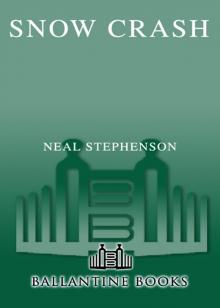 Snow Crash
Snow Crash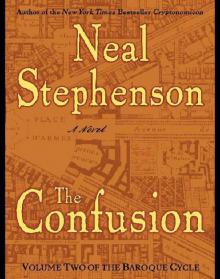 The Confusion: Volume Two of the Baroque Cycle
The Confusion: Volume Two of the Baroque Cycle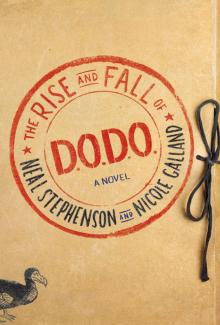 The Rise and Fall of D.O.D.O.
The Rise and Fall of D.O.D.O. The Diamond Age: Or, a Young Lady's Illustrated Primer
The Diamond Age: Or, a Young Lady's Illustrated Primer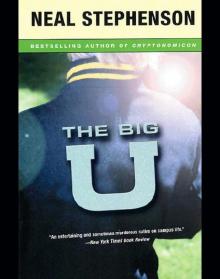 The Big U
The Big U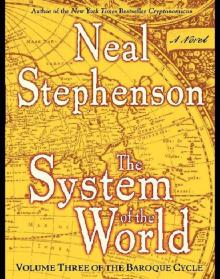 The System of the World: Volume Three of the Baroque Cycle
The System of the World: Volume Three of the Baroque Cycle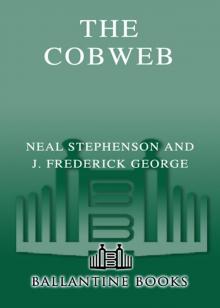 The Cobweb
The Cobweb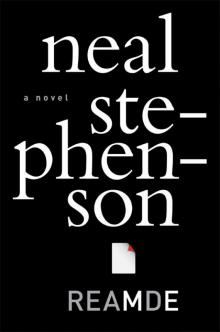 Reamde
Reamde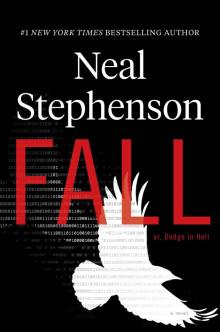 Fall; or, Dodge in Hell
Fall; or, Dodge in Hell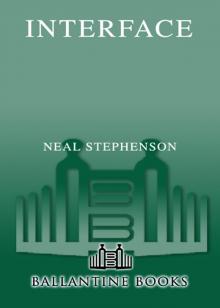 Interface
Interface Quicksilver
Quicksilver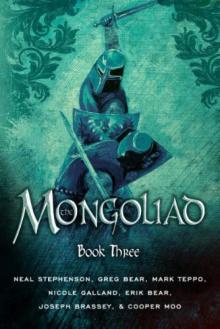 The Mongoliad: Book Three
The Mongoliad: Book Three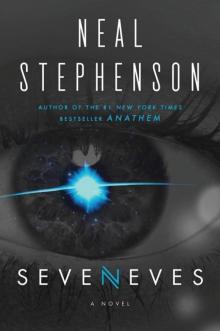 Seveneves
Seveneves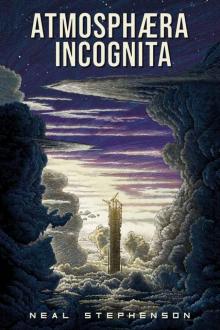 Atmosphæra Incognita
Atmosphæra Incognita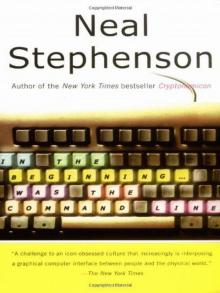 In the Beginning...Was the Command Line
In the Beginning...Was the Command Line Anathem
Anathem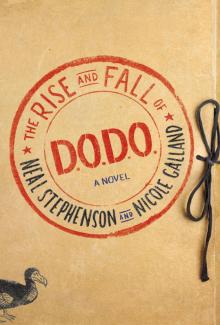 The Rise and Fall of D.O.D.O.: A Novel
The Rise and Fall of D.O.D.O.: A Novel The Mongoliad: Book Two
The Mongoliad: Book Two Diamond Age or a Young Lady's Illustrated Primer
Diamond Age or a Young Lady's Illustrated Primer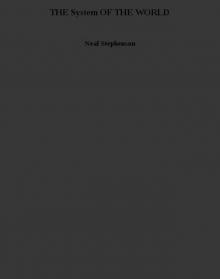 THE System OF THE WORLD
THE System OF THE WORLD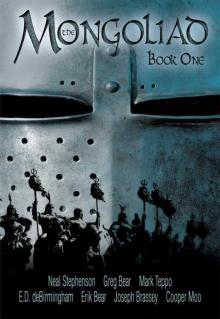 The Mongoliad: Book One tfs-1
The Mongoliad: Book One tfs-1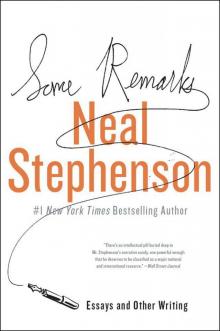 Some Remarks: Essays and Other Writing
Some Remarks: Essays and Other Writing Zodiac
Zodiac Spew
Spew The Baroque Cycle: Quicksilver, the Confusion, and the System of the World
The Baroque Cycle: Quicksilver, the Confusion, and the System of the World The Diamond Age
The Diamond Age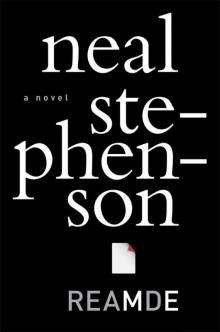 Reamde: A Novel
Reamde: A Novel In the Kingdom of Mao Bell
In the Kingdom of Mao Bell Mother Earth Mother Board
Mother Earth Mother Board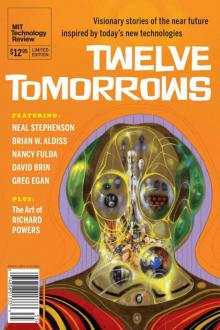 Twelve Tomorrows - Visionary stories of the near future inspired by today's technologies
Twelve Tomorrows - Visionary stories of the near future inspired by today's technologies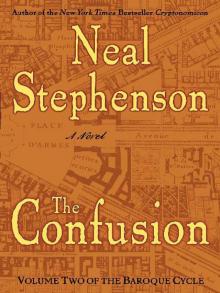 The Confusion
The Confusion The Great Simoleon Caper
The Great Simoleon Caper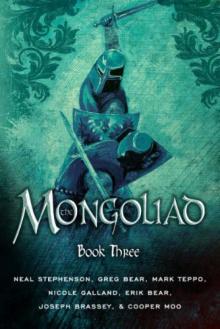 The Mongoliad: Book Three tfs-3
The Mongoliad: Book Three tfs-3